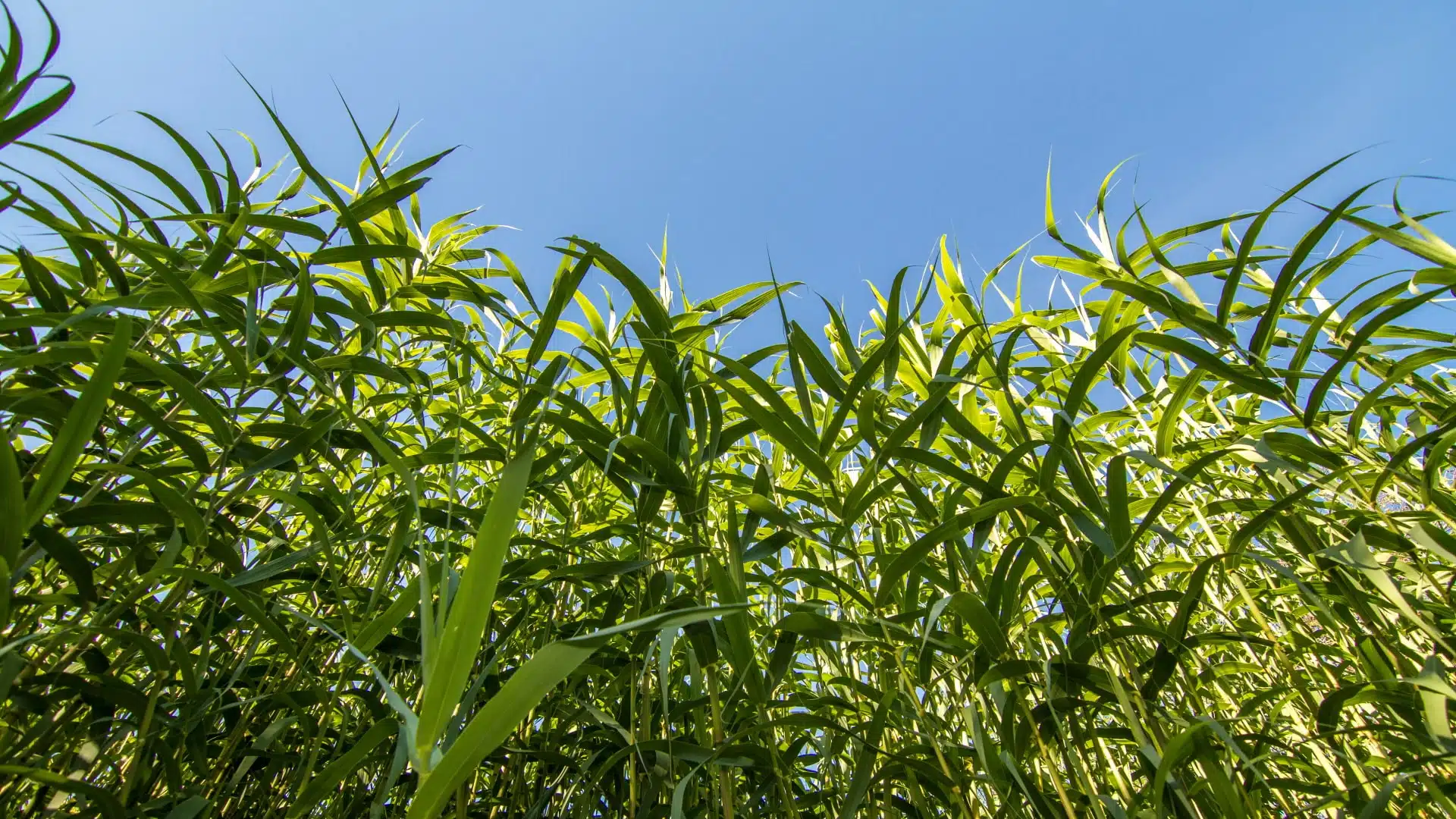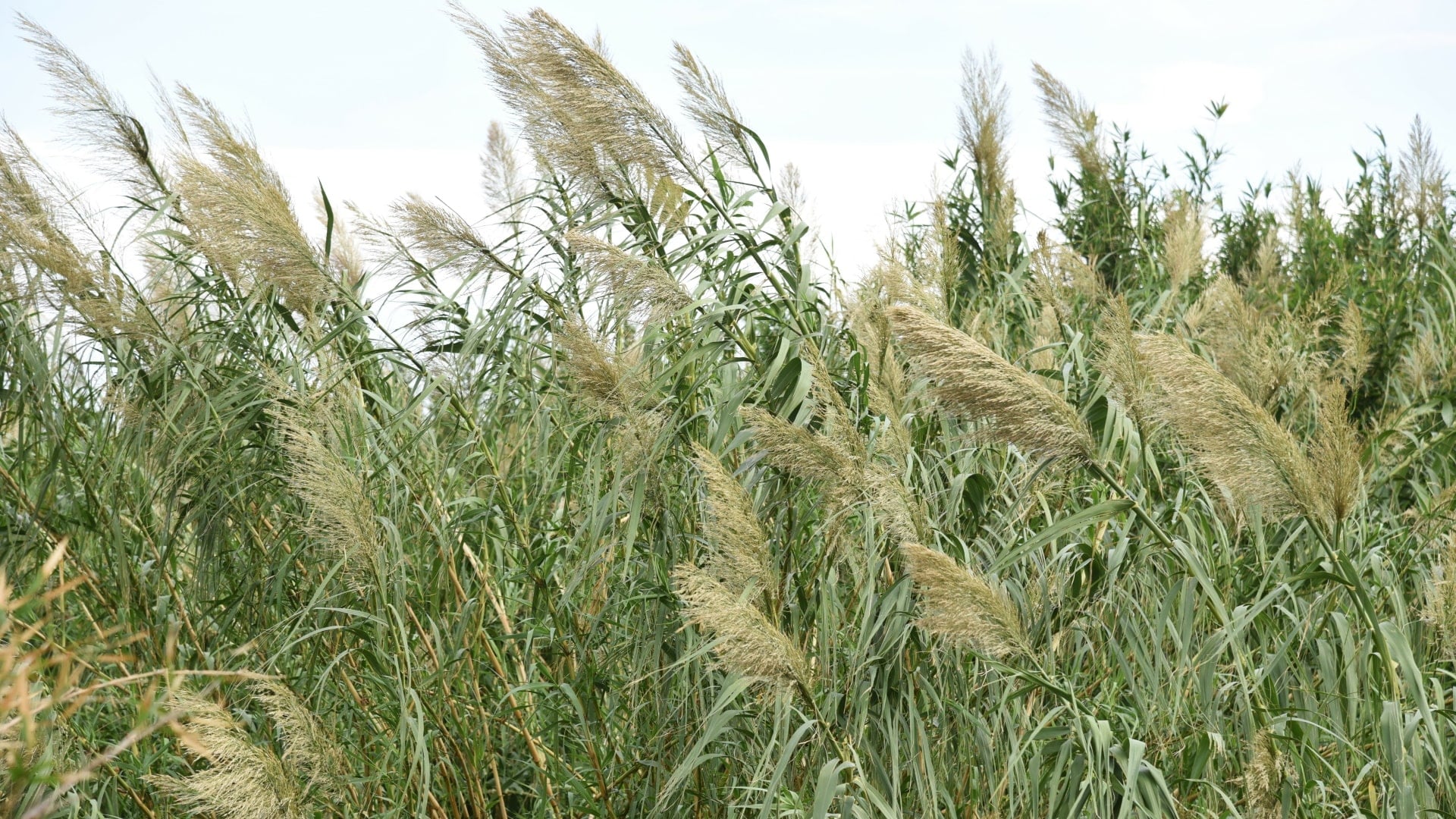Arundo
Arundo donax L.
General info
Originating from East Asia this water loving perennial plant grows in rich soils in water near lakes, ponds, marshes, rivers and other bodies of water to achieve its maximal biomass yield. Despite originating in East Asia it is now certified as being present in all inhabited continents across the globe suggesting a range of adaptabilities.
A. donax is a sterile plant able to reproduce asexually via its rhizomes which undergo exploratory expansion in the spring and summer or via rhizome fragments or rooting at the nodes. It ranges in height from around 2–9 m and undergoes this growth rapidly due to an unusually saturated photosystem for a C3 plant variety along with a development more associated with a C4 plant. It is one of the biggest herbaceous plants in the world which means it is productive as a bioenergy crop due to quick and large accumulations of biomass achieved.
In regions with warmer winters, it is evergreen but dies back in climates with freezing winter temperatures. However, it does produce biomass with significantly high moisture levels, which can be a complication for cutting, handling, conserving, storing and combustion processes. The moisture is more welcomed for ensiling based bioenergy production such as biogas production.
Cultivation and agronomy
A. donax plantations are said to produce biomass for around 10–15 years or even longer if harvested frequently and fertilised; though later harvest years tend to see a decline in biomass yields achieved. Similar to other rhizome species, it does require considerable soil restoration to reutilise the land for other planting aspects due to the need to ensure all rhizome is removed and destroyed to prevent re-establishment.
A. donax grows well with minimal inputs, though water requirements in the initial year of establishment can be crucial. Despite not needing fertiliser to thrive, productivity is increased when fertiliser is used. Like many other promising bioenergy grass-type crops, it is applicable to marginal lands which reduces competition with food production.
It has been reported to produce on average 30–40 Mg ha-1 dry matter per year with a significant range around this value (20–177 Mg ha-1), largely due to locally warmer climates in USA studies. It has outperformed both M giganteus and switchgrass (Panicum virgatum L.) in multiple studies, with above-ground dry biomass tonne ha-1 yr-1. Due to its large size, it may be a challenge for harvesting processes but it is suggested that slight modifications to machinery used for crops such as sorghum and corn can allow functional harvesting of A. donax.
Due to its halophyte nature, it is applicable to saline soils and can thrive in brackish estuaries. In the first establishing crop year, yields will be lower and more weed control will likely be needed via herbicide treatments. The sterility of this species makes it an interesting and controllable prospect as a bioenergy crops.
In energy production it appears to outperform traditional energy crops for bio-methane production (average 12,618 Nm3 CH4 ha-1) and, provided biomass pre-treatments are utilised, it also appears to outperform more energy crops with regards to bioethanol production (11,000 – 15,000 litre ethanol per ha-1). It delivers comparable direct combustion energies to those of miscanthus, poplar and switchgrass (18.7 MJ kg-1). As it has potential higher yields achievable than these species it is suggested that between 40–60% more energy could be produced per ha-1 via Arundo. Though, for direct combustion, it has been noted to have problematically high ash content compared to equivalents miscanthus and switchgrass but this could be resolved via timing of harvest, as earlier harvesting can reduce dry matter percentage of ash by more than twofold.
Return to crops overview
Relevant research
Corno, L., Pilu, R., & Adani, F. (2014). Arundo donax L.: a non-food crop for bioenergy and bio-compound production. Biotechnology advances, 32(8), 1535-1549.
Amaducci, S., & Perego, A. (2015). Field evaluation of Arundo donax clones for bioenergy production. Industrial Crops and Products, 75, 122-128.
Webster, R. J., Driever, S. M., Kromdijk, J., McGrath, J., Leakey, A. D., Siebke, K., … & Long, S. P. (2016). High C3 photosynthetic capacity and high intrinsic water use efficiency underlies the high productivity of the bioenergy grass Arundo donax. Scientific Reports, 6(1), 1-10.

